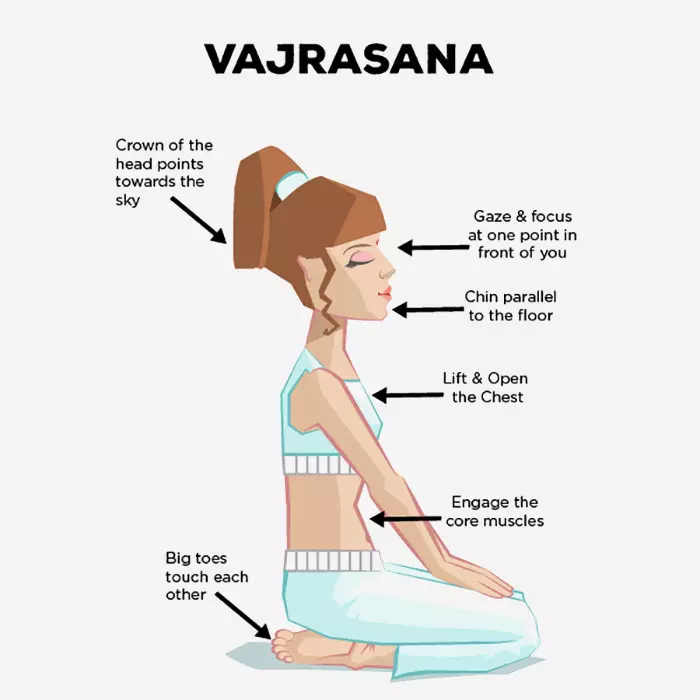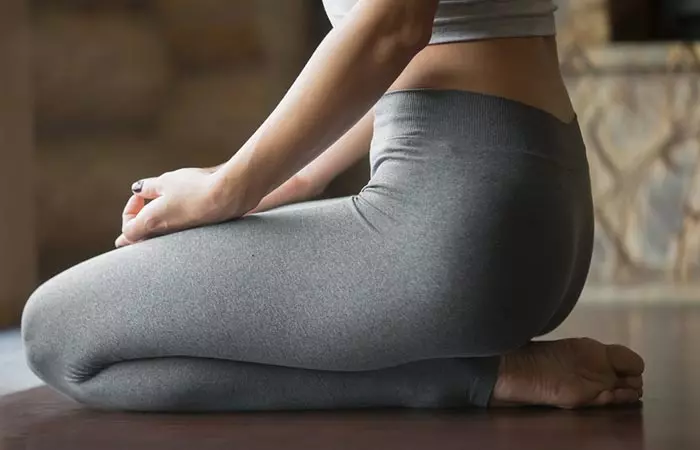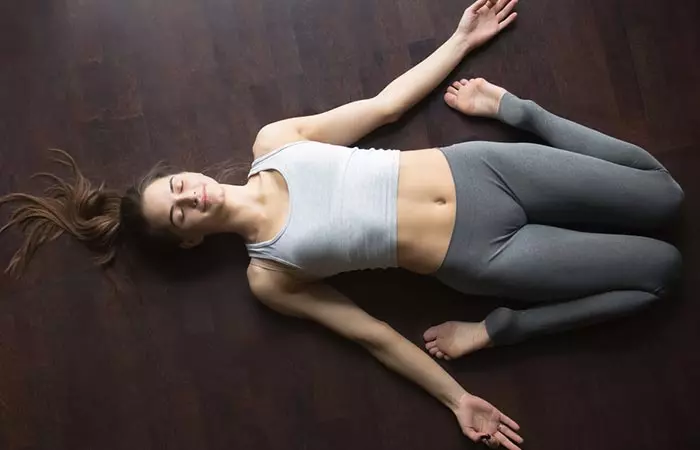Vajrasana in yoga involves kneeling with your back lowered and the buttocks resting on your heels. It can be a great solution for treating indigestion and constipation. You can practice this pose after a meal, which is not the case with most yoga poses. But, can everyone perform this yoga pose? What are the precautions you need to be mindful of? This article touches upon all these aspects and explores the benefits of vajrasana, its science, and more. Keep reading!
Everything You Need To Know About The Vajrasana
What You Should Know Before You Do The Asana
Yoga is supposed to be practiced on an empty stomach, but this asana is one of the few exceptions . You can safely perform this asana after a meal. In fact, it is more effective if performed immediately after a meal. This pose promotes proper digestion.
Level: Beginners Style: Hatha Duration: 5 to 10 Minutes Repetition: None Stretches: Ankles, Thighs, Knees, Hips Strengthens: Legs, Back
How To Do The Vajrasana
Precautions And Contraindications
This asana is extremely safe. However, these are a few things you should be cautious about when you start practicing this asana.
Beginner’s Tips
As a beginner, when you assume this position, it is likely that your legs might begin to pain in no time . If this happens, all you need to do is undo the asana, and stretch your legs forward. Give your ankles, knees, and calf muscles a good massage. In time, with practice, you should be able to go up to 30 minutes comfortably in this asana. Also, beginners should work slowly and gradually on bettering the strength of the muscles in the lower back before they try to go deeper into the pose or increasing the duration. Once the lower back is strengthened, the strain on the breath is decreased. It is also important to note that if you push yourself more than your body can take, the benefits of the pose are minimized.
Advanced Pose Alterations
The advanced variation of the Vajrasana is the Supta Vajrasana. In this variation, once you sit in Vajrasana, you need to bend backward and place both your forearms as well as elbows on the floor. Then, arch your dorsal spine and neck until the base of your head touches and rests on the floor or is supported with a thin pillow. This asana helps strengthen the muscles in the neck, back, and chest regions. It also expands the chest and relieves lung problems. However, it is important to master the Vajrasana before you try this pose. It is also best to practice the Supta Vajrasana under the guidance of a yoga instructor.
Benefits Of Vajrasana
These are a few amazing benefits of the Vajrasana.
The Science Behind Vajrasana
The Vajrasana is a steady, firm pose, and those who assume it cannot be shaken easily. It is a meditative pose, but sitting in this pose can be quite challenging. One has to conquer the pain in the legs and the unrest in the mind to master the pose and enter a meditative state. One needs to train themselves to sit still and be willing to invest their mind in it. The Vajrasana regulates blood circulation in the lower pelvic region. Sitting on your legs reduces the blood flow in the legs and increases it in the digestive area, therefore increasing the efficiency of the digestive system.
Preparatory Poses
Follow-Up Poses
Both Vajrasana and Virasana appear similar and require sitting on the floor, but they are slightly different in terms of their execution. Let us learn more about them in the next section.
Vajrasana Vs. Virasana
While practicing Virasana, you start by kneeling on the floor, just like you would begin Vajrasana. The key difference between the two is that in Virasana, you have to place the knees closer, with your hips sinking between the heels, instead of your feet being close together as in Vajrasana. Virasana requires you to position your feet in such a way that they do not touch each other. Since Vajrasana requires you to sit on your feet and not in between them, it requires less internal rotation at the hip. When it comes to choosing between the two, you should choose the one that suits your body’s flexibility. Is Vajrasana better than walking? Yoga practitioners suggest refraining from walking after meals as the energy is diverted from digestion. Instead, they suggest sitting in Vajrasana and letting your body relax and divert the energy to digest the food. Can we do Kapalbhati in Vajrasana? Yes, Kapalbhati can be done while sitting in Vajrasana (1). It keeps the respiratory system healthy. How many times a day should we do Vajrasana? Doing Vajrasans 4-5 times a day is ideal for your body. Is Vajrasana suitable for high blood pressure? Yes. Vajrasana may help regulate blood pressure and boost digestive health. Embark on a journey of tranquility and well-being with Vajrasana Yoga. Learn the correct technique, experience its profound benefits, and discover inner peace in this enlightening video made by an expert. Check it out today!











